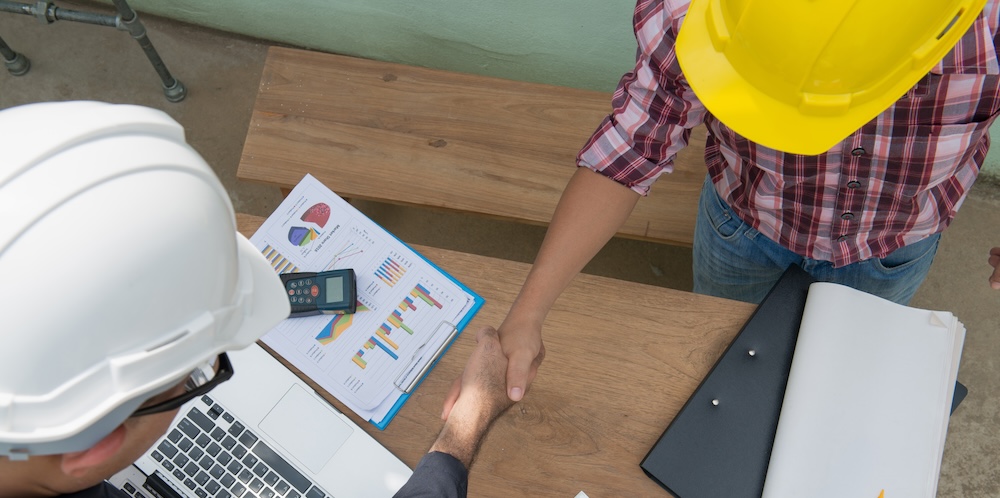— 4 min read
Estimate, Bid, Quote, or Proposal: What’s the Difference?
Last Updated Dec 10, 2024
Last Updated Dec 10, 2024

In construction, an estimate, bid, quote, and proposal can take on different meanings depending on who is using the term. Some construction professionals use the words “estimate” and “quote” interchangeably, while a bid or proposal may turn into a contract if a customer signs it.
It’s a lot like the difference between Coke, cola, soda, and pop––it all depends on where you are and who you’re talking to, but we can all agree that you won’t get a glass of milk when you order one.
Putting all of the confusion and subtleties aside, below are what we consider the most widely accepted definitions.
Table of contents
Quote
A quote is a figure that a contractor gets from a supplier for the price of materials they need for a job.
Quotes are often only good for a certain period of time––generally about a month––which means the builder has only that amount of time to buy the materials at the given price. Outside the given timeframe, the price of materials may change. This is why there is often a timeframe associated with quotes. Quotes expire because the materials involved in a construction project are commodities and their prices fluctuate based on supply and demand.
A good example is lumber. In an expanding economy, suppliers can’t just create more 2x4’s if demand outstrips their projections. Trees need to be harvested, processed into lumber, and shipped to market before they’re sold. It takes time for producers to catch up to the unanticipated demand. Another example may include an excavator whose costs vary depending on the price of diesel fuel at the time he actually performs the work.
Estimate
Contractors develop an estimate to calculate their expected costs to complete a project. They look at the specifications for a project and determine the raw materials and labor they need. The contractor then goes to their suppliers to get quotes for the raw materials, which they use to calculate the estimate.
An estimate may also include an accounting of taxes, overhead, subcontracts, and equipment costs. Contractors generally work up estimates before or during the process of drafting a bid or proposal.
Estimates are usually free, but some contractors do charge for the time it takes to provide a thorough and accurate estimate.
Those who charge for estimates often have a formal education in construction and you can expect a much more detailed document where everything is spelled out. As a client, if you’re receiving multiple estimates, sometimes the more detailed one will help you find items that less detailed estimates may have overlooked.
Bid
The word “bid” in construction may refer to a document that offers to perform a specific job at a specific price within a certain period of time (also called a proposal). It may also refer to the specific price offered in that document.
Here’s an example of how the term might be used:
Jack: ABC construction submitted their bid today (referring to the document)
Jill: Oh. What did they bid? (referring to the price)
A subcontractor might also submit a bid to a general contractor to perform a certain part of a project. Think of a framer submitting a bid to a general contractor for the framing work on a house. The framer’s bid, if he wins, then figures into the general contractor’s bid to build the entire home.
Learn more: The bidding process explained
Proposal
A proposal is a detailed document submitted as part of a competitive process to win business, often provided in response to a Request for Proposals, or RFP. It includes quotes received from suppliers for raw materials, proposals from subcontractors for their portion of work on the project, and estimates of labor costs, taxes, and other overhead. It also includes a markup of the contractor’s profit.
For example, the type of siding, brick, or stucco for the exterior of a building, the type of windows, as well as a timeline for the project and a schedule for payments would all be included.
Some proposals also include a place for the customer to sign in order to represent their acceptance of the proposal. Some contractors may also refer to this type of proposal as a “contract.” Others simply ask for a signature to acknowledge receipt of the proposal.
While the difference between a construction estimate, quote, bid, and proposal may be confusing to understand, knowing the difference is crucial to the success of your projects.
Was this article helpful?
Thank you for your submission.
93%
7%
You voted that this article was . Was this a mistake? If so, change your vote here.
Scroll less, learn more about construction.
Subscribe to The Blueprint, Procore’s construction newsletter, to get content from industry experts delivered straight to your inbox.
By clicking this button, you agree to our Privacy Notice and Terms of Service.
Categories:
Tags:
Written by
Hildy Medina
Hildy Medina is the Editor-in-Chief of Jobsite. In her former life, Hildy was a journalist writing for various publications, including Forbes, The San Diego-Union Tribune, and The Santa Barbara News-Press.
View profileExplore more helpful resources

Understanding Subcontractor Bid Packages in Construction
Construction bid packages can have a cascading impact on the success of a construction project. The quality of a bid project may affect the quality of the bids, which in...

Winning Bids with BIM: Marketing the Benefits to Owners
Creating a 3D model of a construction project is becoming more common but, that doesn’t mean that all projects leverage BIM – or, that all companies are using BIM in the...

Mastering Construction Bid Templates to Simplify the Process and Win More Work
Every construction project is different. Different set of challenges, timelines, key players, etc. Because every project is different, what project owners need to know from a bid will differ based...

How To Improve Your Bid-Hit Ratio: 5 Strategies To Deploy
The bidding process is a necessary part of the construction game for any general or specialty contractor. Without bidding jobs and getting awarded contracts, the company doesn’t have a way...